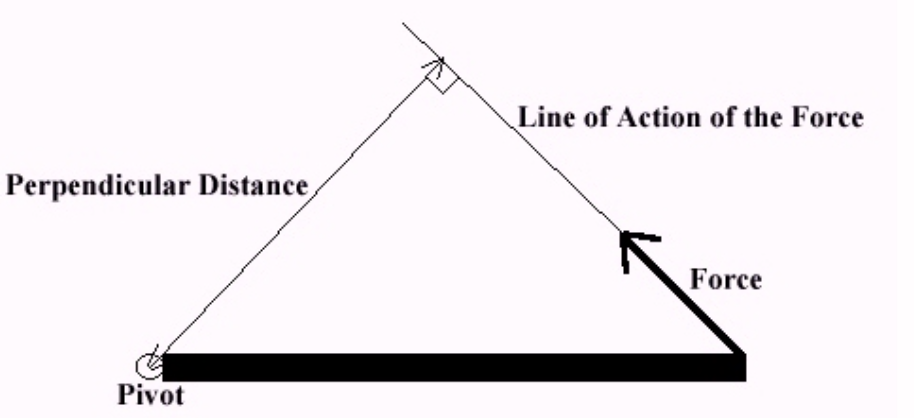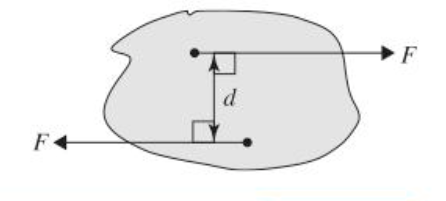25 Centres of mass and stability
1/20
There's no tags or description
Looks like no tags are added yet.
Name | Mastery | Learn | Test | Matching | Spaced |
|---|
No study sessions yet.
21 Terms
moment =
force x distance
where distance is the perpendicular distance from the line of action of the force from the point that moments are being taken from

torque
another word for moment/turing force
what can be said about moments if a system of forces is in equilibrium
the resultaint moment taken about any point is 0
lamina
a flat thin objecct with a negliable thinckness - model as a 2d shape (kinda like a shop sign)
if the line of action of a force passes through point a what do you do when you are calculation the moment around A
ignore that force
units for moments
Nm
rotational equilibrium
anitclockwise moments = clockwise moments
a pivot
a fixed point that an object can rotate about
a couple consists of
two parallel forces that are equal in magnitude, opposite in direction and do not share a line of action

what is the moment of a couple about any point always equal to
F x d
where d is the perpendicular distance between the line of action of the two forces
forces that cause rotation without translation are known as
couples
Cantilever force diagram
Y is vertical reaction force
X is horizontal reaction force
M is the moment due to the couple at the cantilever
Center of mass
The single point at which we can treat the entire mass of the object as acting on
Centre of mass for a system of particles
X = (∑(mₙ x xₙ))/∑mₙ
Y = (∑(mₙ x yₙ))/∑mₙ
Center of mass for a right angled triangle
X = 1/3 x base
Y = 1/3 x height
Centre of mass for a isocolies
X = 0.5 x base
Y = 1/3 x height
A uniform lamina has
Area and mass but no thickness
Center of mass of a composite body with an area removed
as normal but the area removed should be considered as negative
Centre of mass for a uniform albina with an area bounded by the curve y = f(x)
X = ∫xy dx / ∫y dx
Y = ∫ ½y² dx / ∫y dx
Centre of mass for a uniform solid formed by rotating the area between the curve and the x axis by 360
X = ∫xy² dx / ∫y² dx
Y = 0
Note about using integration to find the CoM
The density p should be included in a proof but will cancel out
π should be included if it is a volume of revolution proof but will also cancel